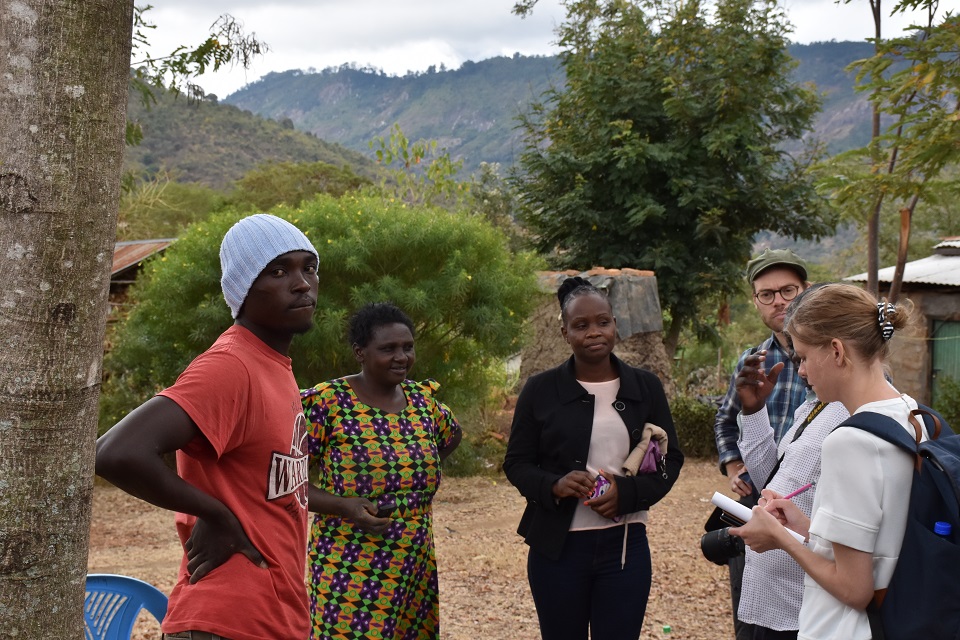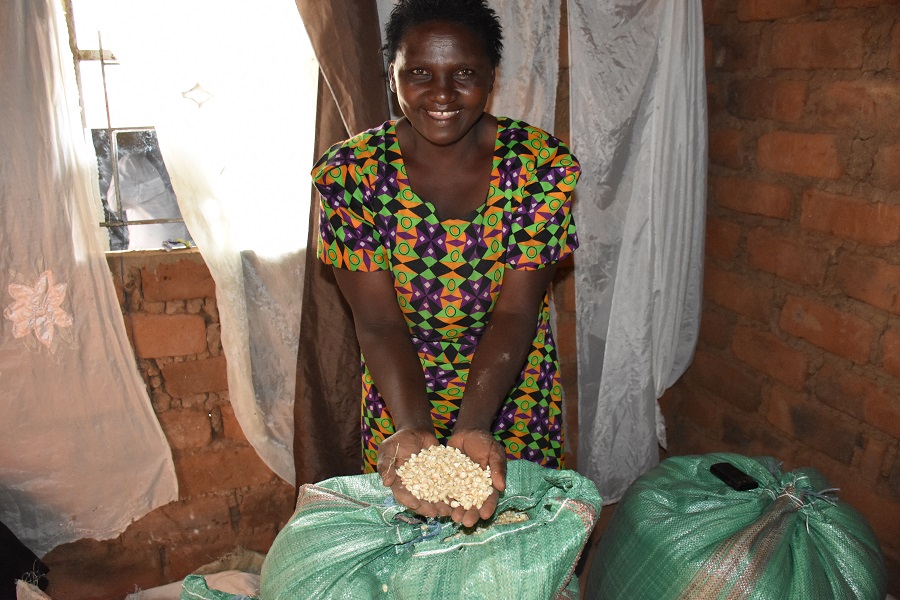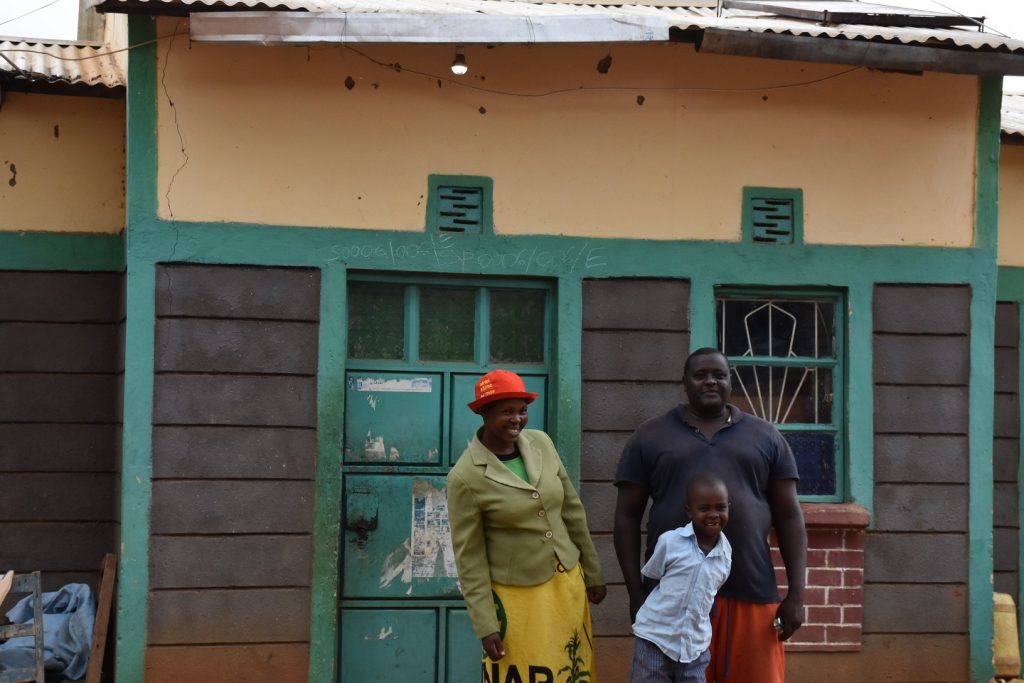Farmers adopting drought tolerant Maize in Makueni county, Kenya
Swedish journalists Eric Abel and Anna Liljemalm who are writing a book on climate change and seed visited the Stress Tolerant Maize for Africa project in Kenya from Sept. 9-11, 2019.

We met some farmers who adopted drought tolerant maize hybrid SAWA from Dryland Seeds Ltd (DSL) in drought-prone Makueni county.
Dolly Muatha is a 49 years-old demo farmer with four children.

Photo: CIMMYT/Masinde
Because her fields are well placed near the road, she has benefited for the last three years from DSL support to demonstrate the yield potential of SAWA DT maize in this terraced landscape.
Dolly likes SAWA ‘’because it produces 2 to three beautiful cobs and it matures early. In case rains stop when the maize is at knee height, even before tassel and silks form, that is where you see its potential compared to non-drought tolerant varieties.’’

Alex Somba 45 year-old farmer near Wote saw how SAWA performed at Muatha’s farm and tried it out in 2017.
He usually practices dry planting from October 1, as rains usually start around the third or end October, until end of the year.
‘’SAWA beats other popular hybrids because of its early maturity and drought tolerance. It resists well to Grey Leaf Spot and grain stores well, resists weevil.’’
‘’If rains start end of October and after 2 weeks of rains there is a dry spell of 2 weeks, other varieties will perform badly whereas SAWA copes relatively well with such erratic rains patterns,’’ he added.
Providing good agronomic advice to the farmers is important to benefit fully from new varieties. Joyce, DSL field officer pointed out that ‘’ a good advice I usually give for farmers like Alex is optimum crop spacing.’’ For better yields, she would advise to practice 20cm x 30 cm spacing, one seed at a time. Traditionally farmers would put up to 5 seeds per planting hole, which will generate small cobs and much lower yields.
Tags: climate change, drought tolerant maize, Drylands Seeds, Kenya, seed company
Trackback from your site.
